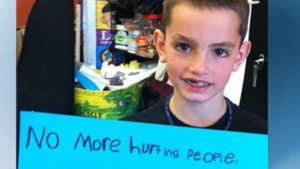 As we now all know, yesterday’s tragic bombing at the Boston Marathon resulted in at least 176 people injured. Nine of them are children—at least 8 of whom are being treated in hospitals. One child, 8-year-old Martin Richard, was killed during the Boston Marathon explosion while enjoying ice cream with his family. His 6 year old sister lost her leg and their mother underwent brain surgery due to her critical injuries.
As we now all know, yesterday’s tragic bombing at the Boston Marathon resulted in at least 176 people injured. Nine of them are children—at least 8 of whom are being treated in hospitals. One child, 8-year-old Martin Richard, was killed during the Boston Marathon explosion while enjoying ice cream with his family. His 6 year old sister lost her leg and their mother underwent brain surgery due to her critical injuries.
There are many other stories of families affected and many of us have been touched either directly or indirectly by this senseless act. One of my good friends just reported that her son’s friend may lose his hearing because pellets were sprayed from the bomb and got lodged in his head. He was there to cheer his dad on who was running the marathon. The juxtaposition of happy joyous cheering, eating ice cream and enjoying a special outing with the family with the horror of a senseless bombing is hard to fathom. It’s even harder to explain.
As we talked about during the Newtown Connecticut shootings and other stories of senseless child murder, these are unimaginable acts that are likely to bring about questions. Some are easy to answer. Others feel nearly impossible. Still, we can’t put our heads in the sand, as we want our children to hear the truth in an age-appropriate way from someone who knows them best—and that likely means you. Remember, if you aren’t talking about it and they want to hear an answer, they will go to another source. It is our job to be the source.
So how do you talk to your children about ugly, scary things that are talked about in the media? What can we do?
(1) Media exposure should be limited: Information is best coming from a trusted source who is sensitive to the way your child can best receive it—at a time when is best for your child. You can limit details based on age and maturity—and seeing gruesome photos and frightening video is inappropriate for most children. Information on the news is aimed at adults—not at children.
(2) Let them know that responsible adults are working to keep us safe and healthy: When situations seem unsure, children need to know that the grown-ups are helping those in need. Authorities are working to keep people safe. Medical staff, like doctors and nurses, are helping those who have been hurt. And be sure to let them know that this incident is rare and in no way means that it will happen again in the same or a different location.
(3) Stay calm and keep your emotions on an even keel: It is normal and natural to feel frustrated, sad and angry when senseless acts occur. As a parent, teacher or child mentor, being “there” for young people sometimes means keeping our emotions in check so that we don’t overwhelm or alarm our children. While you certainly don’t need to be stoic or aloof—and you can talk about feeling sad when things like this happen—the full gravity of your feelings should be reserved for other trusted adults in your life.
(4) Expect questions to come over time: Children aren’t always ready to talk when you are. That means that it’s normal for children to have questions about sensitive topics over time. It may go on for weeks—a question here and a question there—never lasting more than a minute or two. Other times you may have a few longer conversations. Children process tough topics in different ways. It’s OK if you don’t know the answer—sometimes it’s more important to simply listen. Other times, you may need to tell them you can find out the answer for them at a later time. You are a source of comfort and information—but you don’t need to be Wikipedia.
(5) Remain open to talking about fears and concerns: Don’t be surprised if fears and concerns seem illogical, disconnected and come at unusual times. You might be driving your child to an after-school program on a beautiful sunny day when your child pops a question about something horrific that happened days or even weeks before. Your child may develop a temporary fear of the dark, loud noises, people in uniform or otherwise while trying to regain their footing. Ask them; “is there something I can do to help you feel safer or more secure?” or “Would you like advice or would you prefer that I just listen?” Be patient and open to talking, reassuring and even just “there” during these tough times.
(6) Know that unusual behavior or feelings may arise: Sometimes frightening and unexpected news can make children act in different ways. Some may become clingy or hyper while others may become withdrawn and quiet. Some may sleep more while others may sleep less. Still others may eat more while others may report that they aren’t hungry. Ask them if it would be helpful for them to talk out their feelings. Assure your child that their feelings are OK and give them space to feel anyway that they do—validating their emotions as normal and natural.
(7) Don’t stop living: Sometimes you may want to just construct a bubble for your family to live in just to keep potential dangers out. I get that. I’m a parent too. But living in fear is no way to live. Instead, enjoy everyday. Love deeper. Hug longer. Tell your children how grateful you are for their safety, their health and their presence in your life. Teach your children to do the same.
And don’t forget to tell your children about the good in the world. There are good people. Very good people. As Mr. Rogers’ said; “look for the helpers.” People who look out for others. People who put themselves out in order to take others in.
good people. Very good people. As Mr. Rogers’ said; “look for the helpers.” People who look out for others. People who put themselves out in order to take others in.
Instead of blocking out the world, let us teach our children to become the kind of people that make this world a better place. Children thrive when they feel  that they can contribute to their family, their community, their country and beyond. Encourage them to do that. By doing so, you will teach them that there is a lot more good in this world than there is evil. And, yes, they are a big part of that good.
that they can contribute to their family, their community, their country and beyond. Encourage them to do that. By doing so, you will teach them that there is a lot more good in this world than there is evil. And, yes, they are a big part of that good.
In other words, they don’t just need to look for the helpers, they can become them.

 Dr. Robyn Silverman answers one parent’s question about how to instill manners in her children– especially when they haven’t been overtly enforced in the past.
Dr. Robyn Silverman answers one parent’s question about how to instill manners in her children– especially when they haven’t been overtly enforced in the past.

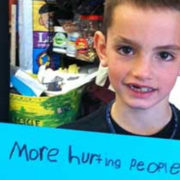
 As we now all know, yesterday’s tragic bombing at the Boston Marathon resulted in at least 176 people injured.
As we now all know, yesterday’s tragic bombing at the Boston Marathon resulted in at least 176 people injured.  good people
good people that they can contribute to their family, their community, their country and beyond. Encourage them to do that. By doing so, you will teach them that there is a lot more good in this world than there is evil. And, yes, they are a big part of that good.
that they can contribute to their family, their community, their country and beyond. Encourage them to do that. By doing so, you will teach them that there is a lot more good in this world than there is evil. And, yes, they are a big part of that good.

 In the above video, I talk in depth about 6 tips to helping children keep a positive attitude including:
In the above video, I talk in depth about 6 tips to helping children keep a positive attitude including: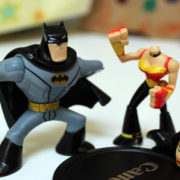
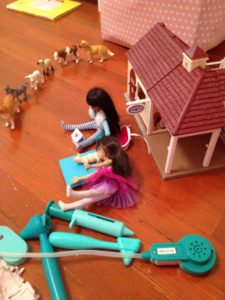 As a parent, I often wonder about how the toys and role models in my children’s lives translate to behavior. I tend to be the kind of mother who encourages a wide range of toys, games and books. I am less about banning (unless it is truly counter to our family’s core character-based values) and more about providing a continuum of options so that my children gain experience, choice and understanding.
As a parent, I often wonder about how the toys and role models in my children’s lives translate to behavior. I tend to be the kind of mother who encourages a wide range of toys, games and books. I am less about banning (unless it is truly counter to our family’s core character-based values) and more about providing a continuum of options so that my children gain experience, choice and understanding. My daughter has been known to “acquire” my son’s Batman figure as well as his Spiderman book. She asked for a Superhero book of her own for her most recent birthday that features Superman, Batman and Wonder Woman all together. She’s even going as Wonder Woman to a Superhero/Princess birthday party this weekend. When I asked Tallie what she likes about Wonder Woman, she told me; “She’s cool! She fights cwime!” Justice. Power. Self reliance. Good for every gender!
My daughter has been known to “acquire” my son’s Batman figure as well as his Spiderman book. She asked for a Superhero book of her own for her most recent birthday that features Superman, Batman and Wonder Woman all together. She’s even going as Wonder Woman to a Superhero/Princess birthday party this weekend. When I asked Tallie what she likes about Wonder Woman, she told me; “She’s cool! She fights cwime!” Justice. Power. Self reliance. Good for every gender!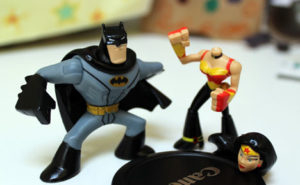 This morning, Wonder Woman single-handedly stopped an oncoming train from crashing into the building of blocks that we all built together– and Batman rescued the people off the train. Unfortunately, there was a casualty. The Wonder Woman action figure was decapitated. Who makes a Superhero with such a flimsy neck? She’s an Amazon Princess Warrior for cripes sake– not a runway model! Ah, well, off to the store to invest in a Wonder Woman toy that can hold her ground…and keep up with my kids!
This morning, Wonder Woman single-handedly stopped an oncoming train from crashing into the building of blocks that we all built together– and Batman rescued the people off the train. Unfortunately, there was a casualty. The Wonder Woman action figure was decapitated. Who makes a Superhero with such a flimsy neck? She’s an Amazon Princess Warrior for cripes sake– not a runway model! Ah, well, off to the store to invest in a Wonder Woman toy that can hold her ground…and keep up with my kids!